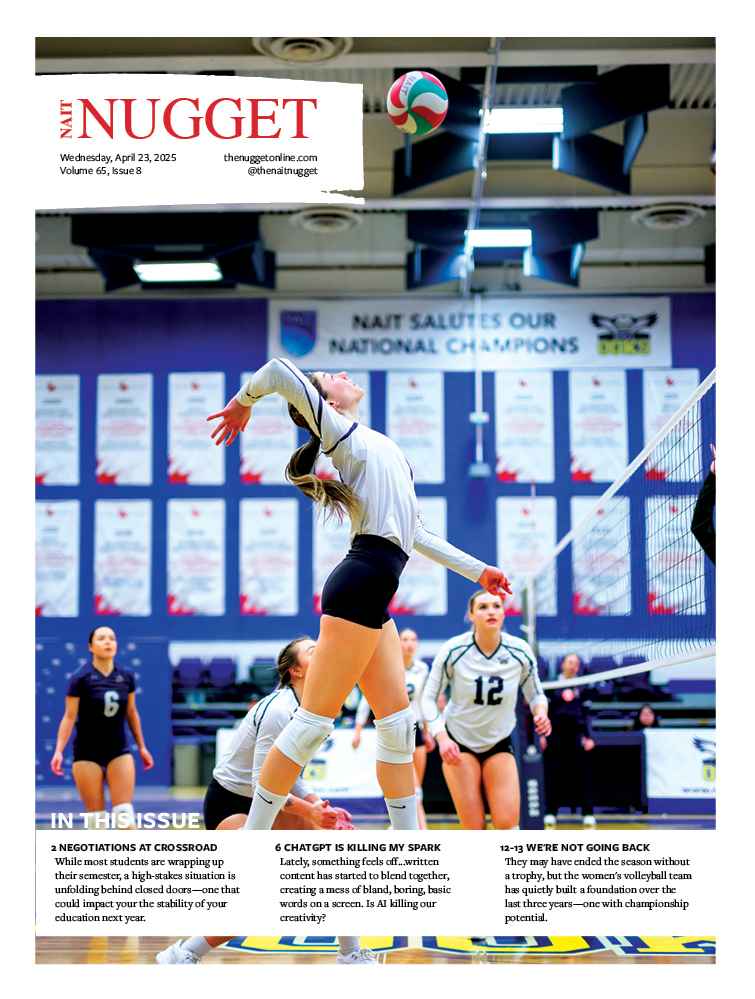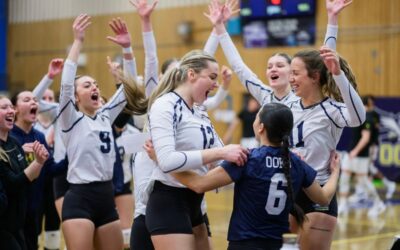The thought of athletic programs crumbling before us due to a lack of funding is a constant fear in the minds of collegiate institutions and those who play the sport. Most universities have found a dip in their income and have been struggling to stay afloat. NAIT has managed to be well prepared through times where nothing can truly be prepared for.
Jordan Richey, Athletic Manager of NAIT, is thankful that NAIT changed the way they budget for athletics. Without general fund contributions to the program, athletics would be in hot water as an institution.
“Thank goodness we’re not a ‘pay-to-play’ moto like some [Universities] in the ACAC are. We are operationally funded [by] the institution. Essentially what happens is students pay an athletics and recreation fee, but that’s not just the athletes. That’s all students in full-time programs. That contributes to the NAIT general funds, and then NAIT, in turn, funds our department,” said Richey.
“Unlike SAIT, for example, where the entire budget is from the student-athlete fee, this money just goes into NAIT, and NAIT budgets out money for our department.”
“We submit for a budget each year of what we need, and then it’s either approved or not approved based on NAIT’s overall dollars.”
The department can relax knowing that the program can still operate if students don’t pay the fees. It continues to support athletes and their coaches to train in ways that are approved by the province. Without this funding system in place, the odds of having functional athletics right now would be at a bare minimum or nonexistent overall.
“We saw what happened to SAIT this year during the pandemic when all of their students were online. They weren’t charged that athletic fee, so they can’t even operate. They can’t train. They’re fully dependent on students paying that fee. That’s the other side of it. We actually want the institution to fund us because if fees aren’t charged, we still have revenue coming in,” said Richey.
‘Boost the Ook’ is another way for athletes to fundraise money for added supplies that might not be in the department’s budget, such as additional gear and clothing. It’s clear to the athletes that this is not to cover the operations of the process itself.
Having taken on the task of rebooting athletics as a whole, they’re finally on the last step: the assembly of coaches.
“Right now [we have] gone through a three-year transformational process, and we’re at the end of [that] with the head-coach structure. That’s the final piece of finances for NAIT athletics, and now we won’t be asked for any more reductions moving forward,” said Richey.
A new NAIT President meant a review of the program, but much to their surprise, President Laura Jo gave positive reinforcement that athletics is something NAIT is looking to maintain and move forward with.
“We get to build back stronger than ever, [that] is my hope. We’re going to have a committed coaching staff and a committed administration. NAIT wanted to keep our budget and funding at the top of the ACAC, which they’ve still [managed to do],” said Richey.
The athletics department has seen a handful of lay-offs, which is a common theme in the pandemic, but with the rebuilding of the program, they can bring back the staff to positions that will be best suited for the new look.
“Now, unfortunately, there were elimination of positions because there weren’t athletics going on,” said Richey. “There was no work for people to do, so we basically reset in the athletics department. We’re viewing it as an opportunity because now when we bring staff back, we can create the positions that we need right now.”
“We actually have the opportunity to start from scratch with our admin team and not [to say] those same people [won’t] be back, but they might be in new positions.”
The decision to bring athletics back for a season come fall is purely based on whether it is safe for the student-athletes to be competing or not. There is no concern for NAIT’s athletics in regards to funding for those programs, nor will it affect them if the season gets delayed.
“What I can say is our senior leadership has been a part of the ACAC process to bring sports back,” said Richey. “It won’t be a financial decision if we don’t bring sports back right away. It’d be purely because of safety concerns.”
Richey expresses that NAIT is trying to figure out different scenarios that could potentially assist with athletics moving forward next year, depending on what restrictions might be in place.
“[There may be] a little bit of a later start date, no overnight travels, [that’s the] thought process going into it to make sure that we keep students as safe as possible,” said Richey.
Although NAIT has found success throughout the pandemic, the Canadian Collegiate Athletic Association could see a struggle to rise back into a strong organization, according to Richey.
“What the CCAA mostly does is National Championships, and it could be running into having two straight years of no National Championships,” said Richey.
“What it could mean is that for all of the members…they’ll have to pay more fees to have a National Championship. There could be a domino effect there, but nothing is really certain because we don’t know the future, and that’s the bottom line,” expressed Richey. “I wish I knew.”
Anything can switch on a dime, and there’s no guarantee as to whether athletics will have a fighting chance come next year. But as for NAIT Athletics, the reworked financial model will continue to help support athletes in their journey to have a positive, meaningful student-athlete experience.






